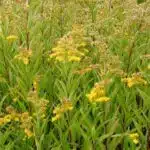Powdery mildew is a fungal disease that affects a wide range of plants, including vegetables, fruits, and ornamentals. The disease manifests as a powdery white or gray coating on the leaves, stems, and flowers of affected plants. If left uncontrolled, powdery mildew can severely reduce plant growth and yield. While there are several chemical fungicides available to control powdery mildew, many gardeners are seeking natural alternatives to protect their crops.
One such alternative is milk spray. Milk has been shown to have antifungal properties that can effectively control powdery mildew on plants. Milk is readily available and inexpensive, making it an attractive option for gardeners looking for affordable natural solutions to plant diseases. In this article, we will explore how to use milk spray to control powdery mildew and discuss its effectiveness as a natural plant disease management strategy.
Understanding Powdery Mildew And Its Impact On Plants
Powdery mildew is a type of fungal disease that affects many plants and crops, including fruits, vegetables, and ornamental flowers. It appears as a white or grayish powder on the leaves, stems, and buds of infected plants. This powdery substance is actually made up of spores that are released into the air and can easily spread to other plants nearby.
The causes of powdery mildew are varied but typically include high humidity, warm temperatures, poor air circulation, and low light conditions. In addition, some plants may be more susceptible to powdery mildew than others due to genetic factors or inadequate nutrition. Once a plant is infected with powdery mildew, it can quickly spread throughout the entire plant and even to neighboring plants.
Symptoms of powdery mildew can vary depending on the type of plant being affected, but most commonly include stunted growth, distorted leaves or flowers, and a weakened immune system. Infected leaves may also curl up or turn yellow before eventually falling off the plant altogether. If left untreated, powdery mildew can severely damage or even kill infected plants over time.
As plant disease control experts know all too well, chemical fungicides have long been used as a means of controlling powdery mildew in crops and gardens alike. However, there are natural alternatives that can be just as effective without harming the environment or risking harm to humans and animals who come into contact with treated plants. The following section will explore both chemical fungicides and natural alternatives for controlling powdery mildew in greater detail.
Chemical Fungicides Vs. Natural Alternatives
Understanding the impact of powdery mildew on plants is crucial for effective disease management. As we have discussed in the previous section, powdery mildew affects a wide range of plants and can cause significant yield losses. Chemical fungicides have traditionally been used as a means of controlling powdery mildew, but there is growing concern about their negative impact on human health and the environment.
Organic farming and sustainable agriculture practices are gaining popularity as alternatives to chemical-based farming methods. These practices emphasize the use of natural inputs and techniques that promote soil health, reduce environmental impact, and improve crop resilience to diseases like powdery mildew. One such technique is the use of milk spray for powdery mildew control.
Milk spray has been shown to be an effective natural alternative to chemical fungicides in controlling powdery mildew. The science behind this method lies in the fact that milk contains proteins that have antifungal properties. When sprayed onto plant leaves, these proteins form a barrier that prevents spores from germinating and spreading. Additionally, milk spray can stimulate plant defense mechanisms, making them more resistant to disease.
- Using milk spray as a natural alternative for powdery mildew control can lead to healthier crops without compromising human health or the environment.
- Organic farming practices promote sustainable agriculture by using natural inputs and techniques that minimize environmental impact.
- By implementing these practices, farmers can not only reduce their reliance on chemical fungicides but also improve soil health and crop resilience.
The science behind using milk spray for powdery mildew control is fascinating and offers great promise for sustainable agriculture practices. Understanding how different inputs affect plant health is essential for developing effective disease management strategies that protect both plants and humans while promoting eco-friendly farming practices. In the next section, we will delve deeper into the scientific principles behind using milk spray as a natural alternative for powdery mildew control.
The Science Behind Using Milk Spray For Powdery Mildew Control
Milk spray application has been found to be an effective method in controlling powdery mildew. The science behind this lies on the fact that milk contains lactoferrin and other proteins that can inhibit fungal growth. Specifically, the proteins in milk create an environment that is not conducive for fungal growth, thus preventing the powdery mildew from spreading.
Research has shown that using milk spray as a fungicide can provide up to 90% control of powdery mildew. This is because when sprayed onto plants, milk forms a thin film over the leaves which prevents spores from germinating and penetrating into the plant tissue. Moreover, milk spray is considered safe for use on plants since it does not harm beneficial insects or interfere with pollination.
Overall, using milk spray for powdery mildew control is a natural and cost-effective alternative to synthetic fungicides. It can increase crop yields by preventing fungal infections, while also promoting plant health through its nutrient content. However, it is important to note that choosing the right type of milk for your plants is crucial in ensuring optimal results.
Transition: Now that we have discussed how milk spray works in inhibiting fungal growth, let us proceed with the next section where we will delve into choosing the right type of milk for your plants.
Choosing The Right Type Of Milk For Your Plants
As we have discussed in the previous section, milk spray has been found to be an effective solution for controlling powdery mildew. However, it is important to choose the right type of milk for your plants in order to reap its benefits. Here are some types of milk you can use for your plants:
Skim Milk – This type of milk is low in fat and contains high levels of protein. It is also a good source of calcium, which can help strengthen plant cell walls.
Whole Milk – Whole milk contains more fat than skim milk and can provide additional nutrients to your plants. It also contains more lactose, which can serve as food for beneficial microbes in the soil.
Buttermilk – Buttermilk is a fermented dairy product that contains lactic acid bacteria, which can help suppress harmful fungi and bacteria in the soil.
Using milk spray on your plants has many benefits aside from controlling powdery mildew. Milk spray has been found to improve overall plant health by providing essential nutrients such as calcium and protein. It can also stimulate plant growth and increase yields.
In order to prepare a milk spray solution, mix one part milk with nine parts water and add a few drops of dish soap as a surfactant to help the mixture stick to the leaves. Apply the solution using a spray bottle or garden sprayer once every 7-14 days until symptoms disappear. With proper application and choosing the right type of milk for your plants, you can effectively control powdery mildew while promoting healthy plant growth.
Preparing Milk Spray Solution
Gathering Ingredients: Milk spray solution can be prepared using any type of milk with a minimum fat content of 3%.
Measuring Concentration: To prepare the solution, mix 1 part milk with 9 parts water, and agitate to ensure the solution is well blended.
Applying Solution: The solution should be applied with a garden sprayer to all affected plant parts in the early morning or late evening when temperatures are cooler.
Re-application: Re-application of the solution should be done every 7-10 days or after heavy rain.
Protective Clothing: Protective clothing and gloves should be worn at all times when preparing and applying the solution.
Storage: The prepared solution should be stored in a cool place and disposed of after 48 hours.
Gathering Ingredients
Finding alternatives to chemical solutions for plant diseases is becoming increasingly important in modern agriculture. One such alternative is the use of milk spray to control powdery mildew, a common fungal disease that affects many plants. To prepare the solution, there are a few essential ingredients that you will need.
Firstly, you will need fresh milk, preferably whole milk or full-fat milk. Avoid using low-fat or skimmed milk as they do not contain enough fat to make the solution work effectively. Additionally, it is recommended to use organic and locally sourced milk if possible.
The second ingredient required is water. You can either use tap water or distilled water depending on what is available to you. It is important to note that hard water may reduce the effectiveness of the solution due to its high mineral content. When gathering your ingredients, keep these milk spray tips in mind to ensure the best results for controlling powdery mildew on your plants.
Measuring Concentration
As a plant disease control expert, it is crucial to ensure the accuracy of measurements when preparing milk spray solutions. Measuring accuracy plays a crucial role in determining the efficacy of the solution in controlling powdery mildew. The concentration of milk spray solution can be determined by measuring its dilution ratio, which refers to the proportion of milk and water used.
To measure accurately, it is recommended to use measuring cups or spoons that are specifically designed for liquid measurements. These tools provide precise measurements compared to regular kitchen utensils. It is also essential to follow the recipe closely and use the exact amount of ingredients specified. Deviating from the recipe may result in an insufficient or ineffective solution.
When discussing dilution ratios, it is important to note that using too little milk may not provide enough fat content for the solution to work effectively against powdery mildew. On the other hand, using too much milk may result in an overly concentrated solution that can potentially harm plants. Therefore, finding a balance between milk and water is crucial in achieving optimal results when using milk spray solutions as an alternative to chemical pesticides against powdery mildew.
Applying Solution
Preparation tips and the proper use of equipment are essential in ensuring the efficacy of milk spray solutions when applied to plants. Once the solution is properly measured, it is time to apply it to the affected plant areas. The first step is to shake the solution well before using it to ensure that all ingredients are evenly distributed.
To apply the milk spray solution, a sprayer or atomizer can be used. It is recommended to use a handheld sprayer for small gardens or potted plants and a larger capacity sprayer for outdoor gardens. Ensure that the nozzle of the sprayer is set to provide a fine mist as this will allow for greater coverage on leaves and other surfaces.
When applying the milk spray solution, it is important to cover all parts of the plant thoroughly, including both sides of leaves and stems. Apply during early morning or late afternoon when temperatures are cooler and humidity levels are higher. This can help prevent leaf scorching and increase absorption by plant tissues. By following these preparation tips and properly using equipment, one can effectively control powdery mildew using milk spray solutions as an alternative method to chemical pesticides.
Using Milk Spray As A Preventative Measure
Milk spray is a natural and cost-effective method of controlling powdery mildew in plants. The benefits of using milk spray as a preventative measure are numerous. Firstly, milk is a readily available substance that does not contain any harmful chemicals or additives, making it safe for both the environment and humans. Secondly, milk contains lactoferrin and other proteins that have antifungal properties, which help prevent the growth of powdery mildew on plants.
Milk spray application techniques vary depending on the type of plant being treated. For example, some plants may require a stronger concentration of milk than others. Generally speaking, a mixture of one part milk to nine parts water is sufficient to create an effective spray solution. To apply the solution, use a clean sprayer and aim for full coverage of the plant’s leaves and stems.
In summary, using milk spray as a preventative measure against powdery mildew has many benefits, including its availability and safety for both humans and the environment. When applying this method to plants, it is important to use the correct concentration and ensure full coverage of all plant surfaces. In the next section, we will discuss how to apply milk spray to infected plants in order to control existing powdery mildew infections.
Applying Milk Spray To Infected Plants
Gardeners who are passionate about their plants are always looking for ways to keep them healthy and vibrant. One of the most common problems that they may encounter is powdery mildew, a fungal disease that can affect many different types of plants. Fortunately, there is a simple yet effective solution: milk spray. Applying milk spray to infected plants is an excellent way to control powdery mildew without using harmful chemicals.
Before applying milk spray, it’s important to prepare the mixture properly. First, mix one part whole milk with nine parts water in a clean container. Use fresh milk, as sour or spoiled milk will not be effective. Also, avoid using skim or low-fat milk, as these do not contain enough fat to work effectively against powdery mildew.
To apply the mixture, gardeners will need some basic equipment. A spray bottle or sprayer can be used for small- and medium-sized plants, while larger plants may require a garden sprayer or other specialized equipment. It’s also important to wear gloves and protective eyewear when applying the mixture.
In summary, applying milk spray to infected plants is an easy and effective way to control powdery mildew without harming the environment or putting people at risk of exposure to toxic chemicals. By following these simple steps for preparing the mixture and gathering the appropriate equipment, gardeners can successfully eradicate powdery mildew from their gardens and enjoy healthy, robust plants all season long. In the next section, we’ll discuss the importance of proper timing for milk spray application in order to achieve optimal results.
The Importance Of Proper Timing For Milk Spray Application
After applying milk spray to infected plants, it is crucial to understand the best practices for controlling powdery mildew. One of the most common mistakes is applying milk spray too late, as the disease can spread quickly and become harder to control. Therefore, it is essential to monitor plants regularly and apply milk spray at the first sign of infection.
Factors affecting timing include the weather conditions and growth stage of the plant. It’s best to apply milk spray during cooler temperatures and when humidity levels are low, as this reduces the risk of fungal growth. Additionally, milk spray should be applied during the plant’s vegetative stage rather than its flowering stage, as it can cause damage to flowers.
While proper timing is crucial for effective powdery mildew control with milk spray, frequency is also an important consideration. Depending on environmental factors and the severity of infection, multiple applications may be necessary throughout the growing season. It’s important not to overapply milk spray, as this can lead to phytotoxicity or other negative effects on plant health. By following these guidelines for timing and frequency of application, milk spray can be an effective tool in managing powdery mildew in your garden or farm.
Frequency Of Milk Spray Application
- The frequency of application of milk spray is an important factor to consider when trying to control powdery mildew in plants.
- Applications of milk spray should be made every 7-10 days, with the timing of applications dependent on the severity of the disease.
- The amount of milk spray to be applied should be adjusted according to the size and type of plant being treated.
- For small plants, a light application of milk spray should be applied to the entire plant, including both top and bottom of the leaves.
- For larger plants, a more substantial amount of milk spray should be applied to the entire plant, paying extra attention to the leaf undersides.
- If the disease is more severe, applications of milk spray should be increased in frequency and amount.
Frequency Of Application
To effectively control powdery mildew using milk spray, it is crucial to establish a consistent frequency of application. Imagine a garden full of healthy plants with no signs of powdery mildew, consistently sprayed with milk every two weeks. The importance of consistency lies in the fact that powdery mildew can develop quickly and spread rapidly, hence regular application will provide a protective barrier on the plant’s surface.
Overuse or underuse of milk spray can pose significant risks to the plants. Applying too much milk can create an ideal environment for other diseases to thrive, while too little may not provide enough protection against powdery mildew. To avoid these risks, it is essential to follow recommended guidelines for frequency of application and dilution rates.
In conclusion, maintaining a consistent frequency of milk spray application is vital in controlling powdery mildew effectively. Avoiding overuse or underuse will ensure optimum protection for plants without putting them at risk. By following recommended guidelines for dilution rates and frequency of application, gardeners can keep their plants healthy and free from powdery mildew infestations.
Timing Of Application
Best practices in controlling powdery mildew with milk spray involve not only establishing a consistent frequency of application but also considering the timing of application. Gardeners should be aware that spraying plants with milk during high humidity or rain can lead to poor results. Timing is crucial, as applying milk spray during the wrong conditions may encourage the growth of fungi rather than protect against them.
One common mistake gardeners make when using milk spray is waiting too long to apply it. Powdery mildew can spread quickly and become difficult to control if left unchecked for too long. Therefore, it’s essential to begin treatment as soon as signs of powdery mildew appear on plants. The earlier gardeners start using milk spray, the better their chances of preventing further damage.
Another best practice in timing involves applying milk spray early in the morning or late in the evening when temperatures are cooler and humidity levels are lower. This allows for better absorption and adhesion of the solution onto plant surfaces, providing effective protection against powdery mildew without creating an ideal environment for other diseases to thrive. By following these guidelines, gardeners can time their milk spray applications appropriately and avoid common mistakes that could harm their plants instead of helping them.
Amount Of Application
As a plant disease control expert, it’s important to emphasize that the amount of milk spray applied should also be taken into consideration when establishing a consistent frequency of application. While milk is an effective and natural solution for controlling powdery mildew, using too much can lead to over-application risks. The recommended dosage is typically one part milk to nine parts water, which provides enough protection against powdery mildew without suffocating the plants.
Over-application risks include clogging the stomata of leaves, reducing photosynthesis rates and causing leaf burn. These adverse effects may ultimately result in plant damage and reduced crop yields. Therefore, gardeners must understand that more is not always better when it comes to using milk spray as a powdery mildew control method.
It’s essential to strike a balance between applying enough milk spray to protect plants from powdery mildew and avoiding over-application risks. Gardeners can achieve this by following recommended dosages, monitoring their plants’ reactions to the treatment, and adjusting their application frequency accordingly if necessary. By doing so, gardeners can ensure that their plants receive optimal protection against powdery mildew while maintaining healthy growth and development.
Storing And Handling Milk Spray Solution
As the old adage goes, “an ounce of prevention is worth a pound of cure.” This holds true for milk spray solutions used to control powdery mildew. To ensure effective disease control, proper storage and handling of the solution are essential.
Firstly, it is important to store milk properly before preparing the spray. Milk should be kept in a cool place away from direct sunlight to prevent spoilage. Spoiled milk will not only be ineffective against powdery mildew but may also cause more harm than good to plants due to bacterial growth.
Secondly, when handling the milk spray solution, it is imperative that you wear protective gear such as gloves and goggles. This is because the solution can irritate the skin and eyes. It is also recommended that you use a sprayer specifically designated for this purpose to avoid contamination with other chemicals or pesticides.
In conclusion, proper storage and handling of milk spray solution are crucial to its effectiveness in controlling powdery mildew on plants. By taking these precautions, you can ensure that your plants receive the best possible protection without any adverse effects. In the next section, we will discuss how combining milk spray with other natural remedies can offer even better results in controlling powdery mildew on plants.
Combining Milk Spray With Other Natural Remedies For Powdery Mildew
Complementary remedies can be used in combination with milk spray to enhance the effectiveness of powdery mildew control. One effective combination is milk spray and neem oil, which has antifungal properties that can further suppress powdery mildew growth. Another complementary remedy is baking soda, which can also act as a fungicide when applied to infected plants. Adding a small amount of baking soda to the milk spray solution can help increase its potency against powdery mildew.
Aside from complementary remedies, there are also milk spray alternatives that can be used for powdery mildew management. One alternative is potassium bicarbonate, which has been shown to effectively control powdery mildew in various crops. It works by raising the pH level of the plant’s surface, creating an unfavorable environment for fungal growth. Another alternative is sulfur spray, which is a widely used organic fungicide that effectively controls powdery mildew and other fungal diseases.
It is important to note that not all complementary remedies or alternatives may be suitable for all crops or situations, so it is best to consult with a plant disease control expert before implementing any treatment plan. Experimenting with different combinations or alternatives may also require careful monitoring and evaluation of their effectiveness in controlling powdery mildew on specific crops or areas. The next section will discuss how to monitor and evaluate the effectiveness of milk spray and other treatments for powdery mildew control.
Monitoring And Evaluating The Effectiveness Of Milk Spray
One of the most economical and environmentally friendly ways of controlling powdery mildew is by using milk spray. Not only is it cost-effective, but it also has been proven to be highly effective in preventing the growth and spread of powdery mildew. However, simply applying milk spray to plants does not guarantee an immediate solution to the problem. It is crucial to monitor and evaluate the effectiveness of milk spray regularly.
Monitoring the effectiveness of milk spray involves observing plant growth and development over time. This includes checking for signs of new powdery mildew infections, as well as monitoring existing infections to see if they are getting worse or improving. Adjusting the formula may be necessary if there are any changes in the effectiveness of the spray.
To better evaluate the effectiveness of milk spray, a table can be used as a visual aid. The table should have five columns that include date, visual observations, notes on weather conditions, adjustments made to formula and overall assessment. By keeping track of these details over time, it becomes easier to identify trends in plant health and determine whether or not adjustments need to be made to the formula.
In order for milk spray treatment to be successful in controlling powdery mildew, consistency in monitoring its effectiveness is key. Keeping track through regular observations and utilizing tables will allow growers to make necessary adjustments when needed. In addition, understanding common issues with milk spray application can help prevent potential problems from occurring in the first place.
Troubleshooting Common Issues With Milk Spray
Spray coverage is an important factor when using milk spray for powdery mildew control, as it ensures that the entire surface of the plant is adequately covered. The amount of milk spray used should be adjusted depending on the size of the plant and severity of the infestation. When using milk spray, the foliage should be thoroughly wetted but not to the point of runoff. It is important to note that milk spray should be applied every 7-10 days to ensure continued control.
Spray Coverage
To effectively control powdery mildew using milk spray, it is important to ensure that the spray coverage is maximized. This can be achieved by paying close attention to the application method and making sure that every part of the plant is covered with the solution. One common mistake is applying too little spray or spraying from a distance, which can result in uneven coverage and ineffective control of the disease.
To achieve optimal coverage, start by preparing the milk solution according to recommended proportions. Then, use a sprayer with a fine nozzle that will produce small droplets capable of penetrating into tight spaces on plants. It is also advisable to apply the spray during calm weather conditions to prevent drift and ensure even distribution of the solution.
Another way to maximize effectiveness is by spraying frequently, especially during periods of high humidity or when conditions are favorable for powdery mildew development. This will help to prevent new infections and keep existing ones under control. By following these guidelines, you can troubleshoot common issues associated with milk spray application and achieve successful results in controlling powdery mildew on your plants.
Amount Used
To effectively control powdery mildew using milk spray, it is crucial to use the right amount of solution. Using too little can result in ineffective control, while using too much can waste resources and potentially harm plants. Measuring efficacy is important to determine the appropriate amount for each application.
One way to measure efficacy is by conducting a small test on a few leaves or plants before applying the solution to the entire crop. This will help determine the minimum effective dose needed to control powdery mildew without causing any damage. It is also important to note that alternative application methods, such as dipping or soaking plant parts in milk solution, may require different amounts of solution than spraying.
In addition, it is essential to follow instructions for mixing and application carefully when using milk spray on crops. Using too much water or not enough milk can result in ineffective control of powdery mildew. By paying close attention to the amount used and making adjustments as necessary, farmers and gardeners can troubleshoot common issues associated with milk spray application and achieve successful results in controlling this disease on their plants.
Safety Precautions When Using Milk Spray
After identifying common issues when using milk spray to control powdery mildew, it is important to take the necessary safety precautions before handling and applying this solution. Safety gear must be worn at all times, including gloves, protective eyewear, and a mask to prevent inhalation of the spray. Additionally, handling instructions should be strictly followed to avoid any accidents or adverse effects.
Before using milk spray, it is crucial to read and understand the handling instructions provided by the manufacturer. This includes diluting the milk solution with water according to specifications and applying it during appropriate weather conditions. It is also recommended to conduct a small patch test on a few leaves before spraying the entire plant to ensure that there are no negative reactions.
Overall, while milk spray can be an effective method for controlling powdery mildew, it does have its limitations. It may not work as well in severe cases of powdery mildew or on certain types of plants. Furthermore, it may need to be reapplied frequently throughout the growing season for maximum effectiveness. Nevertheless, when used properly and safely with appropriate handling instructions and safety gear in place, milk spray can be a beneficial tool in managing powdery mildew on plants.
In conclusion: The benefits and limitations of milk spray for powdery mildew control should be taken into consideration before use. While it can be an effective solution for many gardeners, proper handling instructions and safety gear must be followed at all times. Additionally, its effectiveness may vary depending on plant type and severity of infection but can still serve as a valuable tool in overall disease management strategies.
Conclusion: The Benefits And Limitations Of Milk Spray For Powdery Mildew Control
As a plant disease control expert, I have evaluated the effectiveness of milk spray in controlling powdery mildew. Despite its unconventional nature, milk spray has shown promising results in combating this fungal disease. The use of milk as a natural fungicide is not a new concept, with early studies dating back to the early 1990s. However, it was only recently that the scientific community started to take notice of its potential benefits.
One of the main benefits of using milk spray is its affordability and accessibility. Unlike chemical fungicides that can be costly and harmful to humans and the environment, milk is readily available and inexpensive. It also offers a sustainable solution for organic farming practices. Additionally, studies have shown that milk spray can suppress powdery mildew growth by up to 90%, making it an effective alternative treatment option.
Despite its apparent benefits, there are limitations to using milk spray for powdery mildew control. One such limitation is that it may not be suitable for all crops or varieties. Some plants may be more sensitive to milk than others and could suffer from phytotoxicity if not used correctly. Moreover, the effectiveness of milk spray may vary depending on environmental factors such as humidity levels and temperature.
In conclusion, while there are some limitations to using milk spray for powdery mildew control, its potential benefits make it a worthwhile consideration for farmers looking for alternative treatments. Further research is needed to better understand how milk affects different crops and varieties under varying environmental conditions. Nevertheless, the use of milk as a natural fungicide offers an accessible and affordable solution for sustainable agriculture practices.
Conclusion
Powdery mildew can be a serious threat to the health of your plants, affecting their growth and survival. While chemical fungicides can be effective in controlling this disease, natural alternatives such as milk spray have been gaining popularity due to their eco-friendly nature and low cost. Milk spray works by altering the pH level of the plant’s leaves and preventing fungal spores from attaching.
Choosing the right type of milk and preparing the solution correctly is crucial for successful powdery mildew control. It is also important to monitor your plants regularly for any signs of disease and evaluate the effectiveness of milk spray. In case you encounter any issues with milk spray, troubleshooting tips are available.
Overall, while milk spray has its limitations, it offers a safe and effective way to control powdery mildew without harming your plants or the environment. As a plant disease control expert, I recommend giving this natural alternative a try and see how it can benefit your garden or farm. Remember to follow safety precautions when using milk spray and always consult with an expert before applying any type of treatment to your plants.
Image Credits
- “POWDERY-MILDEW-poinsettia” by Plant pests and diseases (featured)





























